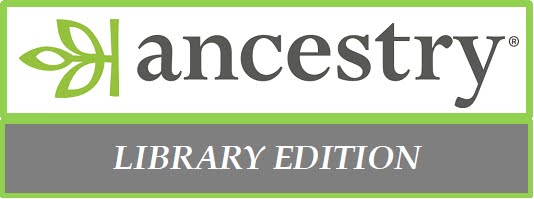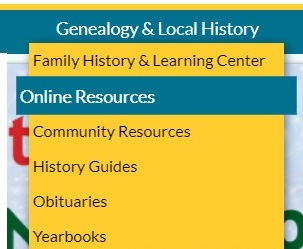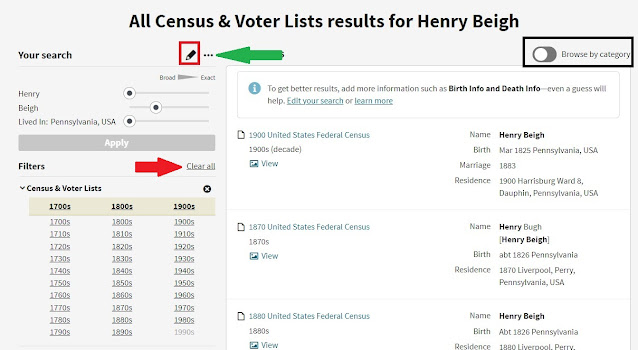The origin of Sweetest Day dates back to a celebration in Cleveland, Ohio on October 8, 1921. In honor of the holiday’s 100th anniversary, here are 8 stories about Sweetest Day as revealed through digitized historic newspapers. Plus, read below to learn what websites can help you begin an investigation of your own using historic newspapers.
1) National Candy Day was a precursor to Sweetest Day.
National Candy Day was the brainchild of the 32nd Annual Convention of the National Confectioners’ Association, held in Detroit, Michigan in May 1916. Association members decided that the second Saturday in October would become known as “National Candy Day.” Newspapers don’t reveal precisely who proposed the day, but a year later an advertisement stated that a candy manufacturer from Utah was the originator of the concept.
“Now ‘Candy Day’ for U. S.,” St. Joseph (Missouri) News-Press, 13 May 1916, p. 1, Newspapers.com.
The Ogden (Utah) Standard, 5 October 1917, p. 3, Chronicling America.
2) The name Sweetest Day began as a slogan.
Locally, advertisements from the Medina County Gazette that announce “National Candy Day” and describe it as “The Sweetest Day of the Year.”
Wall’s Advertisement, Medina County Gazette, 7 October 1921, p. 4, MCDL Digital Archives.
Simmerman & Bachtell Advertisement, Medina County Gazette, 12 October 1923, p. 8, MCDL Digital Archives. (Image at right.)
3) 1916’s National Candy Day was popular… but had its naysayers, too.
Newspapers.com has a helpful feature in which it maps the locations of newspapers with your search term. When using the search term “national candy day” in the latter half of 1916, the map reveals that a large part of the United States (including Hawaii, which wasn’t even admitted into the union yet!) took part in the holiday.
Interestingly, in this search, the state of Kansas has the most results. It could be that Newspapers.com just happens to have more Kansas newspapers digitized than other locales. But Russell Stover (yes, of Russell Stover Candies) lived in Mission Hills, Kansas, with his candy company based in Kansas City, Missouri… so extra promotion of Candy Day in Kansas might not be a coincidence!
In spite of its widespread adoption, there were skeptics of the holiday. For example, this Jackson, Michigan paper pointed out that candy didn’t really need extra promotion.
“The Day’s Comment,” Jackson (Michigan) Citizen Patriot, 13 May 1916, p. 6, GenealogyBank.
4) In the pursuit of candy sales, National Candy Day advertisements listed a lot of other reasons that the day should exist. They included...
the consumption of candy eliciting happiness
the wellbeing of WWI soldiers
public education about candy as food
a day to remember/celebrate family and friends
Boyles’ Store Advertisement, Warrensburg (Missouri) Star-Journal, 30 June 1916, p. 8, Newspapers.com.
The Ogden (Utah) Standard, 13 October 1916, p. 8, ChroniclingAmerica.
Roumanis Candy Shop Advertisement, Mount Carmel (Pennsylvania) Item, 12 Oct 1916, p. 6, Newspapers.com.
“National Candy Day will be Celebrated,” Grand Forks (North Dakota) Herald, 13 Oct 1916, p. 10, Newspapers.com.
The Ogden (Utah) Standard, 5 October 1917, p. 3, Chronicling America.
5) By 1918, National Candy Day had disappeared.
The trend can be seen in the number search results on Newspapers.com:
Keyword search term “national candy day”
1 June 1916 - 31 December 1916 - 273 results
1 June 1917 - 31 December 1917 - 172 results
1 June 1918 - 31 December 1918 - 0 results
1 June 1919 - 31 December 1919 - 3 results
1 June 1920 - 31 December 1920 - 0 results
A war-era shortage of sugar may have contributed to the disappearance of National Candy Day. Tools in Newspapers.com plot the frequency of search terms on a timeline. Between 1916 and 1921, searches for “national candy day” and “sugar shortage” show opposite trends.
 |
| Search results for "National Candy Day" between 1916 and 1921. |
 |
Search results for "Sugar Shortage" between 1916 and 1921.
|
6) 1921 was the comeback year for National Candy Day.
In July 1921, at a meeting of the Central Club of the National Confectioners’ Association, it was reported that there was a disconnect between manufacturers and retailers of candy. Wholesale prices had dropped by 48%, retailers had kept candy at a high price point. At the convention it was decided to bring back National Candy Day.
Across the country (and even into Canada), committees were formed to plan local celebrations of National Candy Day. Some wanted to “install the gift spirit,” others discussed creating educational displays, some mentioned providing candy samples. With no political, sentimental, or religious connection, Candy Day was meant to be for everyone.
“Candy Prices Are Down,” Fort Wayne (Indiana) Sentinel, 25 July 1921, p. 9, Newspapers.com.
“To Lay Plans for Candy Day,” Dayton (Ohio) Daily News, 28 August 1921, p. 11, Newspapers.com.
“Plans to Celebrate National Candy Day,” Fort Wayne (Indiana) Sentinel, 5 September 1921, p. 3, Newspapers.com.
“Candy Day,” The Gazette (Montreal, Quebec, Canada), 26 September 1921, p. 7, Newspapers.com.
“Will Show Value of Candy As Food,” Dayton (Ohio) Herald, 31 August 1921, p. 16, Newspapers.com.
“Oct. 8 Chosen As Year’s Sweetest Day,” Wisconsin State Journal (Madison, Wisconsin), 30 September 1921, p. 1, Newspapers.com.
7) Cleveland was at the forefront of the efforts to rebrand and reposition National Candy Day as Sweetest Day.
In 1921, the manufacturing of candy was a significant part of Cleveland (and Ohio’s) economy. Cleveland had nearly 30 manufacturers, each employing between 100 and 600 people. A committee of eight Clevelanders stated a lofty goal: “The main purpose of the Cleveland committee on ‘the Sweetest Day in the Year’ is to see that it is a day of happiness for every man, woman and child in Cleveland regardless of any circumstances whatsoever.”
Though many newspapers across the nation ran advertisements and brief news articles, the Cleveland Plain Dealer created a four-page “Sweetest Day Section” chock-full of stories about candy, candy manufacturers, advertisements about candy, and the committee’s plans for who would get candy. Individuals were encouraged to remember their spouses, parents, and children, not just with candy but with little gifts and long letters. Treats for animals were also suggested. The committee, meanwhile, aimed to distribute candy to every orphan, ward of state, resident of nursing homes, and newsboy in the city. For distributing the boxes of candy, the committee members enlisting the Advertising Club, the Humane Society (an organization serving orphans), the manager of the State theater, and movie stars to help. In the end, around 10,000 and 20,000 boxes of candy were given to individuals.
Cleveland’s Sweetest Day plans were picked up by the Associated Press. The story was reprinted in newspapers across the country, including states like Illinois, Iowa, Kansas, Michigan, North Dakota, Oklahoma, and Tennessee - and likely many more!
The committee chairman, C. C. Hartzell indicated that there was “a movement to establish a national Sweetest Day in the Year” in 1922.
“10,000 Cheered by Candy Gifts,” Cleveland (Ohio) Plain Dealer, 8 October 1921, p. 7, GenealogyBank.
“Sweetest Day Section,” Cleveland (Ohio) Plain Dealer, 2 October 1921, GenealogyBank.
"October 8 to Be Sweetest Day in The Whole Year," The Dispatch (Moline, Illinois), 1 October 1921, p. 7, Newspapers.com. (See image at right.)
8) Legend has it that Herbert Birch Kingston was the mastermind behind Cleveland’s Sweetest Day marketing.
That may be the case, but, if true, the Plain Dealer made no mention of him in any of the Sweetest Day advertising. His obituary does not identify him as having any connection to the holiday. In fact, most of the news about Kingston seems to indicate that he was an avid golfer and tennis player.
C. C. Hartzell, however, is identified in many articles, many years, as the chairman of Cleveland’s festivities. Upon his death, obituaries identify Hartzell as the "founder" and "originator" of Sweetest Day.
"Many Matches Are Played on Opener," Cleveland (Ohio) Plain Dealer, 12 September 1911, p. 8, GenealogyBank.
"Golf Notes," Cleveland (Ohio) Plain Dealer, 1 June 1931, p. 9, GenealogyBank.
"Kingston, Herbert B.," Cleveland (Ohio) Plain Dealer, 8 May 1934, p. 19, GenealogyBank.
“Sweetest Day Section,” Cleveland (Ohio) Plain Dealer, 2 October 1921, GenealogyBank.
"Sweetest Day is Set," Cleveland (Ohio) Plain Dealer, 28 September 1922, p. 7, GenealogyBank.
"Sweetest Day Founder Dies at Shelby," News-Journal (Mansfield, Ohio), 8 September 1959, p. 2, Newspapers.com.

















































